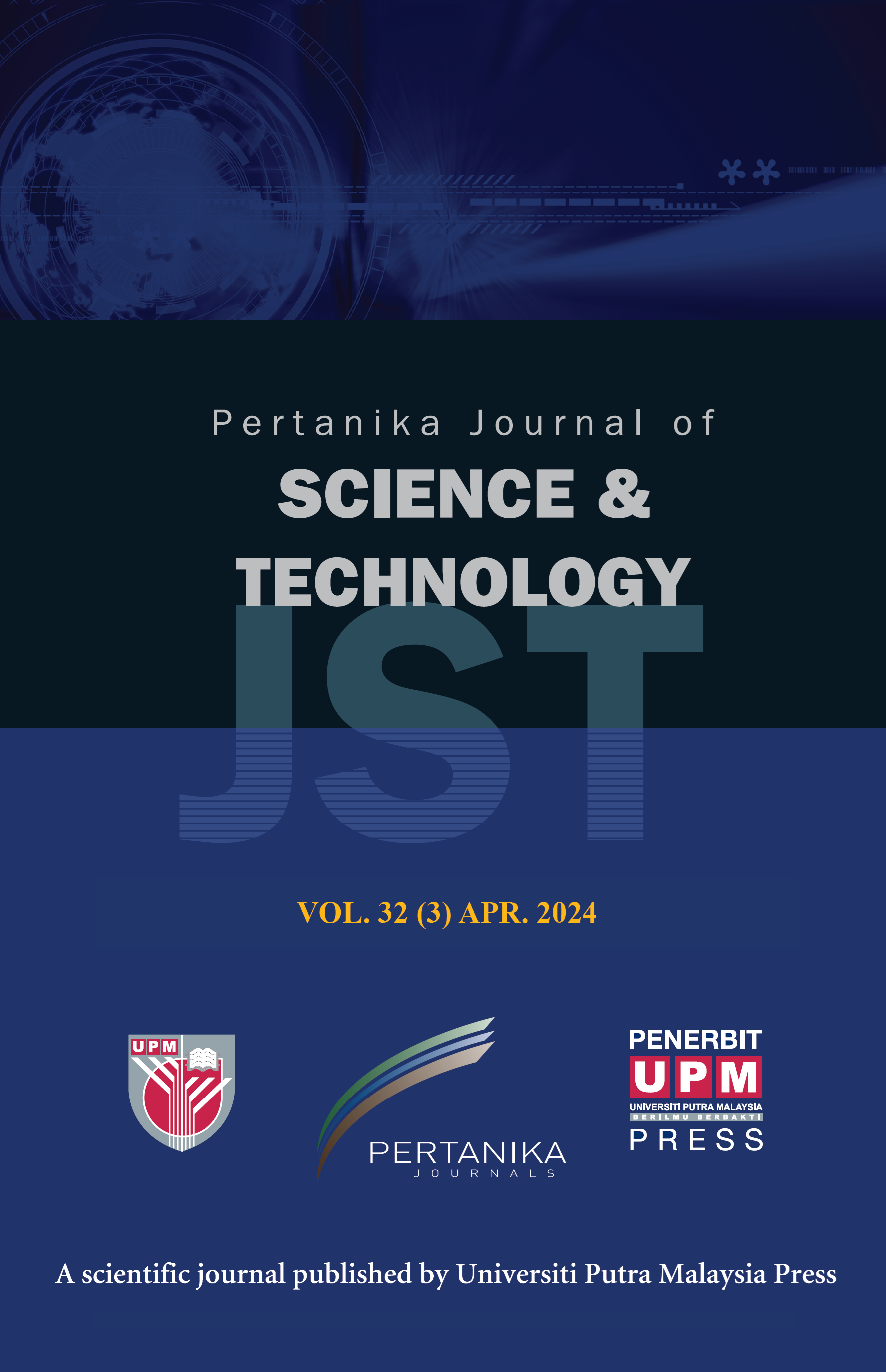PERTANIKA JOURNAL OF SCIENCE AND TECHNOLOGY
e-ISSN 2231-8526
ISSN 0128-7680
Influence of Pyrolysis Temperature on the Composition of Bio-oil Derived from Cerbera odollam as a Raw Material
Muhammad Fathuddin Noor, Sumardi Hadi Sumarlan, Bambang Dwi Argo and Yusuf Hendrawan
Pertanika Journal of Science & Technology, Pre-Press
DOI: https://doi.org/10.47836/pjst.33.4.04
Keywords: Bio-oil, Cerbera odollam, GC-MS, pyrolysis, temperature
Published: 2025-06-11
Cerbera odollam is a widely available biomass due to its adaptability to various environments. Although its fruit is inedible, its utilization can be enhanced through pyrolysis, a thermochemical decomposition process conducted at 250°C–600°C in an oxygen-limited environment. This study investigates the effect of pyrolysis temperature on the yield and composition of bio-oil, biochar, and gas, aiming to determine the optimal temperature for producing bio-oil with desirable chemical properties. Pyrolysis was performed in a fixed-bed reactor at temperatures of 350°C, 450°C, and 550°C. The results showed that increasing the pyrolysis temperature led to a higher bio-oil yield, with the maximum yield (28.83%) obtained at 550°C, while biochar production decreased accordingly. Bio-oil produced at 350°C exhibited the lowest pH (2.97), whereas the highest density (1.07 g/mL) was observed at 450°C. GC-MS analysis of bio-oil at 550°C identified butanal, 3-methyl- as the dominant compound (30.52%), along with significant amounts of oleic acid and 9,12-octadecadienoic acid. The novelty of this study lies in optimizing pyrolysis conditions for Cerbera odollam, underutilized biomass, by identifying 550°C as the optimal temperature for maximizing bio-oil yield while influencing its chemical composition. These findings provide valuable insights into its potential applications in the biofuel and chemical industries. Further research on catalyst addition and process optimization could enhance bio-oil quality and yield.
ISSN 0128-7702
e-ISSN 2231-8534
Share this article

